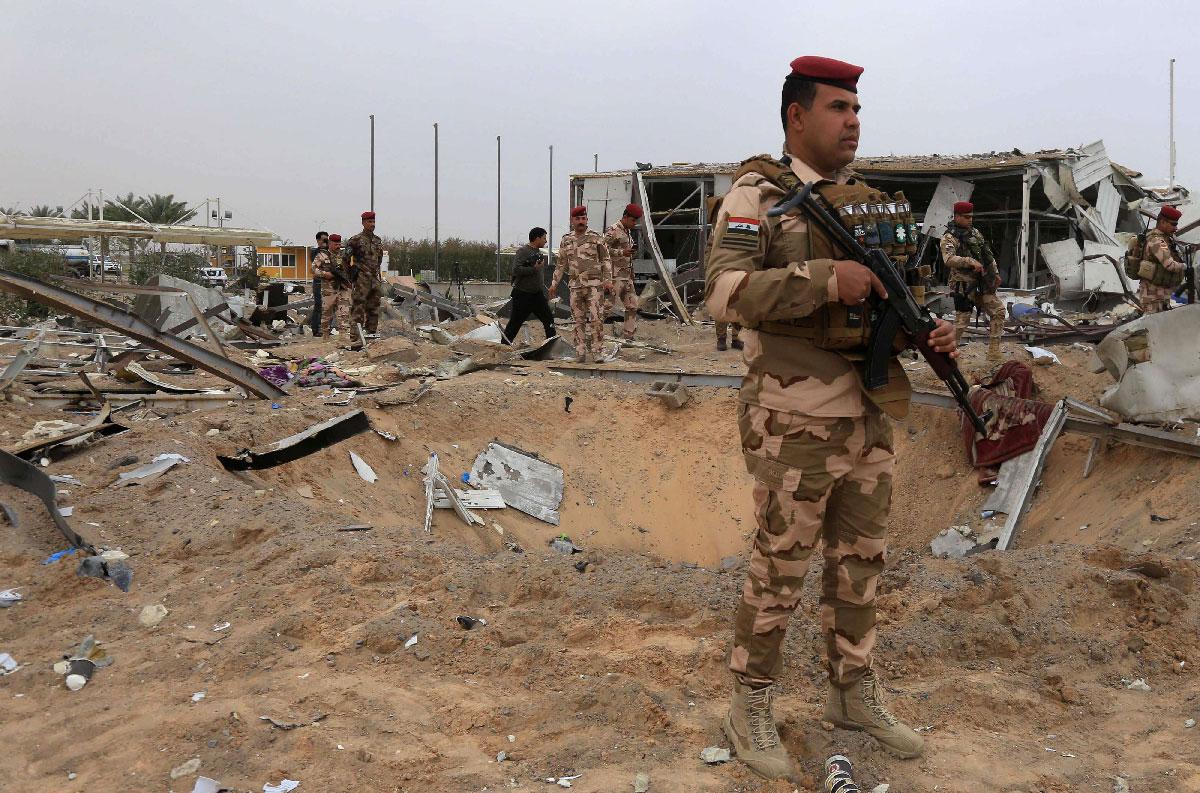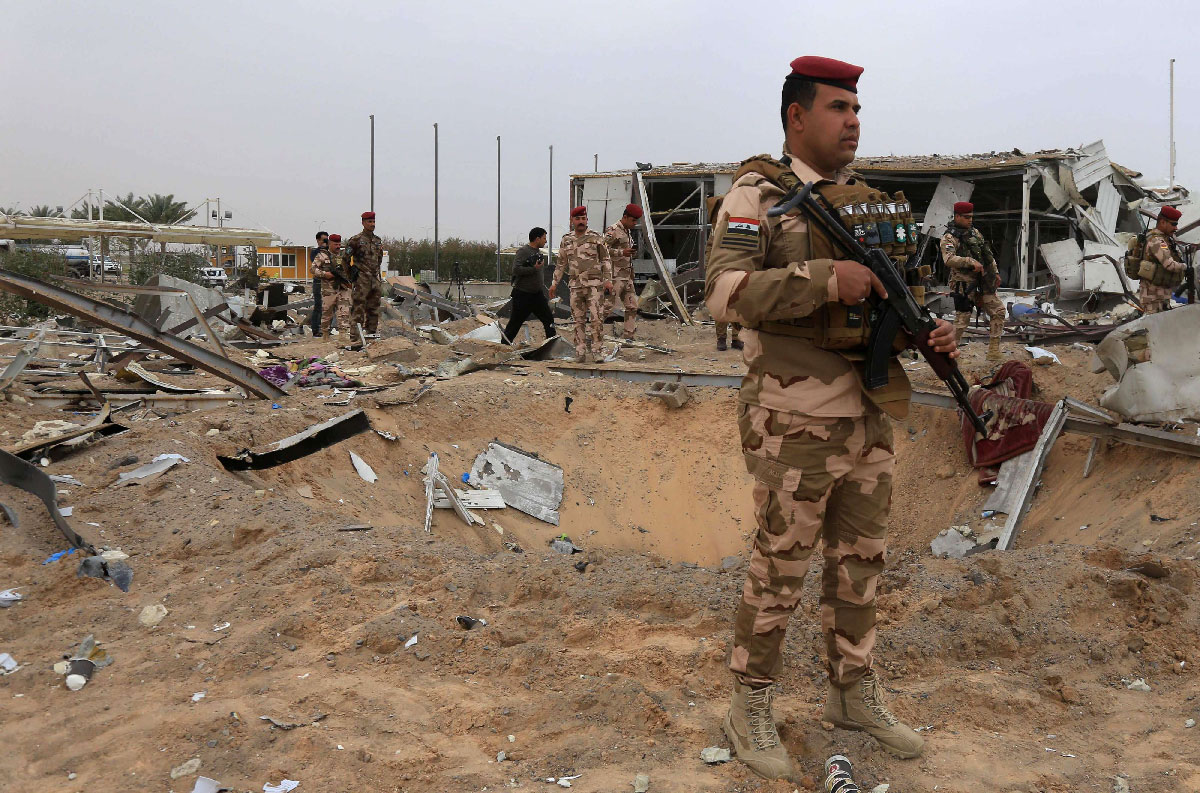The new Iran-backed militia on Iraq’s block
On March 11, rockets struck Camp Taji in Iraq, which houses troops from several countries. Two US soldiers and one British reservist were killed.
After a US response the next day, involving bombing ammo dumps maintained by Kata’ib Hezbollah, an Iranian proxy militia, more rockets were fired at Camp Taji on March 14.
The campaign is claimed to be the work of a new group — the League of Revolutionaries (Usbat al-Thairen). Stressing its desire to expel Western troops from Iraq, the group has threatened more attacks against foreign forces and bombed the Besmaya military base, south of Baghdad, where Spanish soldiers are deployed, on March 17.
Though its name is novel, Usbat al-Thairen is a new version of an old threat.
It is “a grouping of designated terrorist entities under a new name. The thinking: Change the name to escape being targeted by a current designation,” said Michael Pregent, senior fellow at the Hudson Institute.
Phillip Smyth, Soref fellow at the Washington Institute of Near East Policy, described Usbat al-Thairen as “just a front for the Iranians to continue their actions against the US and other coalition forces in the area.”
“The Iranians aggressively try to pursue their goals and have never, since the Islamic Revolution, given up on end of goals of regional and ideological dominance, along with pushing Western powers out of the region,” he said.
The reception Usbat al-Thairen received demonstrates its part in a wider picture. Iran has run and financed several Shia militias in Iraq since the overthrow of Saddam.
From the beginning, these forces, including the Badr Organisation, led by Hadi al-Amiri, fought with the occupying coalition and entrenched Iranian influence over the emerging Iraqi state.
During the war against the Islamic State (ISIS), these militias — under the Popular Mobilisation Forces label — were folded into the Iraqi military’s overall strategy, officially licensed by government decree and deployed to the front lines to fight ISIS. Their power within the umbrella of the Iraqi state only grew.
The militias are accused of brutality and committing sectarian crimes in their campaign to take Iraq from ISIS. Not only were the alleged incidents not punished, they were not investigated. Militias remain an essential part of Iraq’s military infrastructure.
The militias’ leaders, with assistance from Iran’s Islamic Revolutionary Guard Corps (IRGC), have since dug themselves into Iraqi politics.
As outposts of the Iranian regime and sharing its objectives, the groups attack US and other Western forces to make their stays in Iraq difficult to justify and too costly to maintain. Attacks against foreign forces fit that pattern entirely.
“The group follows in a long line of fronts created by the Islamic Republic to threaten, carry out attacks and confuse their foes,” Smyth said.
All this is done in conjunction with other militias.
“The recognised groups offer the group praise and then try to play the card of no real involvement, with a wink and a nudge. Kata’ib Hezbollah did that recently with their statement about the rockets in Taji,” Smyth said.
New groups are intended to give the indication of burgeoning resistance to the foreign presence. That the groups are themselves projections of Iranian power and part of a strategy designed to maintain Iran’s grip on Iraq only renders their actions more vexing.
That they are carried out with the support of some within the Iraqi state makes a response even harder to achieve.
“Hadi al-Amiri’s Badr are in the Joint Operations Centre, in the [Interior Ministry], in the [Defence Ministry]. Amiri’s Badr provides early warning to the militias when possible. It’s the main reason the US doesn’t share intel on targeting of IRGC militias because Badr will simply tip them off,” said Pregent.
The United States has declared its willingness to draw down forces in Iraq, having moved some into the country to stabilise the situation after the assassination in January of Qassem Soleimani, former head of the IRGC’s al-Quds Force and the architect of Iran’s foreign expeditionary policy.
With US forces increasingly being withdrawn and trainers from Western countries likely to leave Iraq in the coming weeks because of the spread of coronavirus there, responding to this new twist on Iran’s militia strategy may prove difficult but it could begin by stating more clearly what this purportedly new organisation is.
“It is time to designate [as terrorists] Badr and Hadi al-Amiri — the battle space holder — the man who allows these militias to operate across Iraq through his Badr Organisation and its saturation of key leadership positions across the intelligence and security apparatus,” Pregent said.
“The Taji attack is in line with IRGC operations… The US should hit IRGC and IRGC targets in Iran — punishing the regime is the only way to put pressure on the IRGC to clamp down on these militias or give them up to the US,” he added.
James Snell is a British journalist.
This article was originally published in The Arab Weekly.






